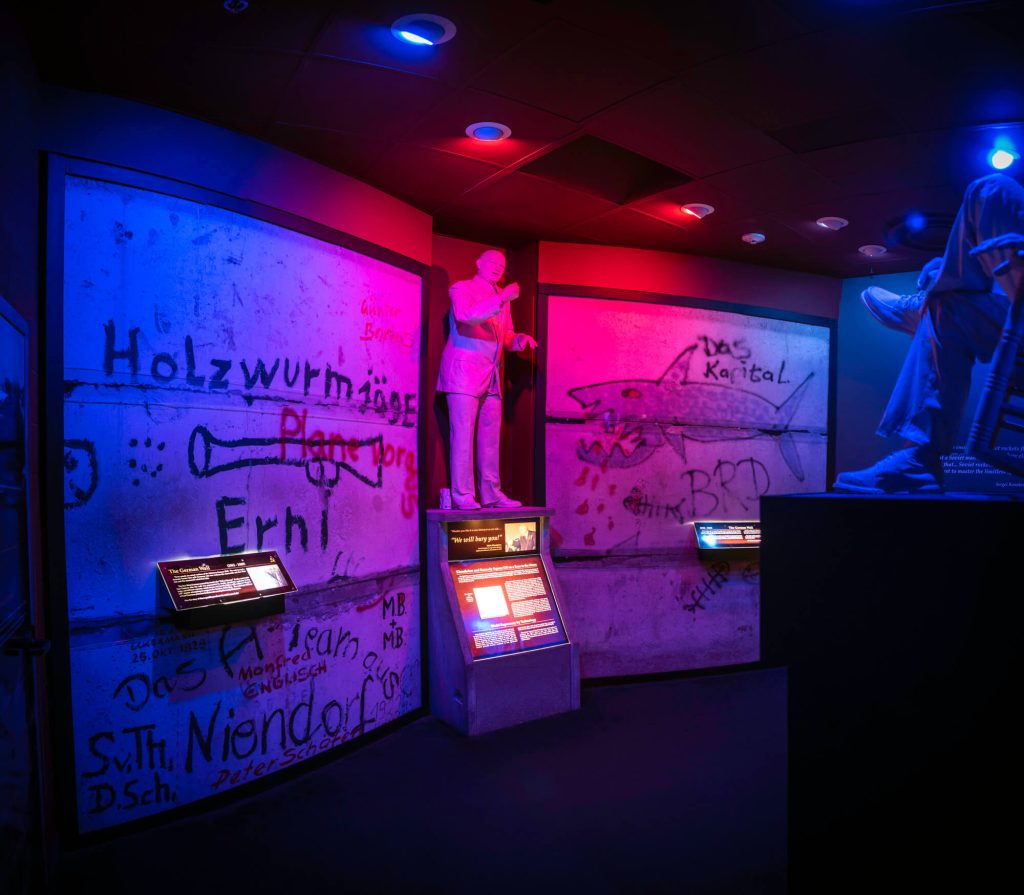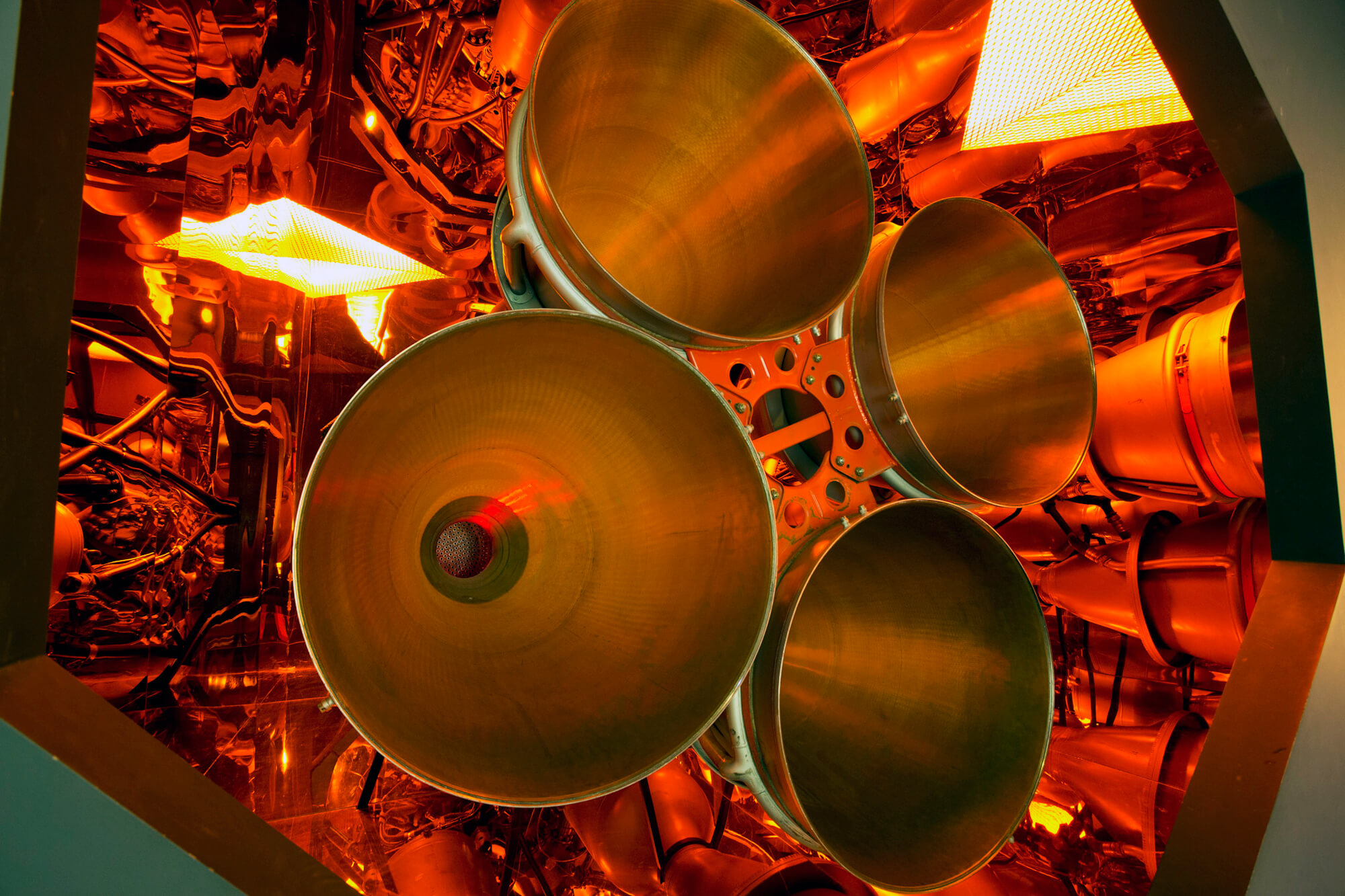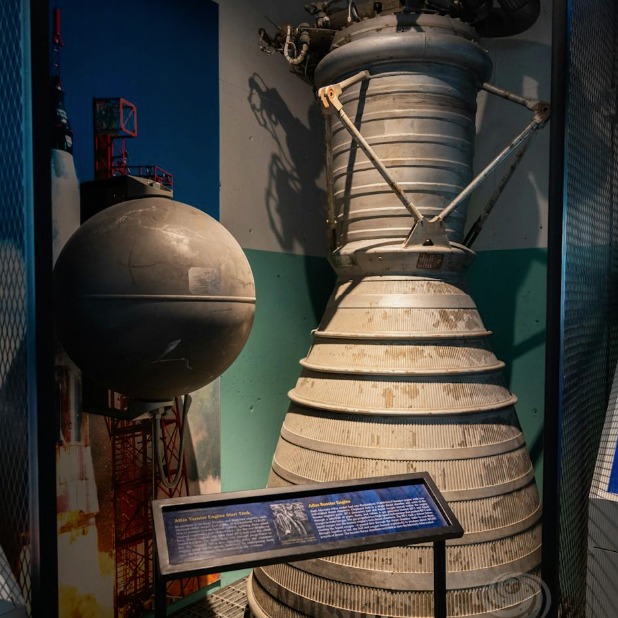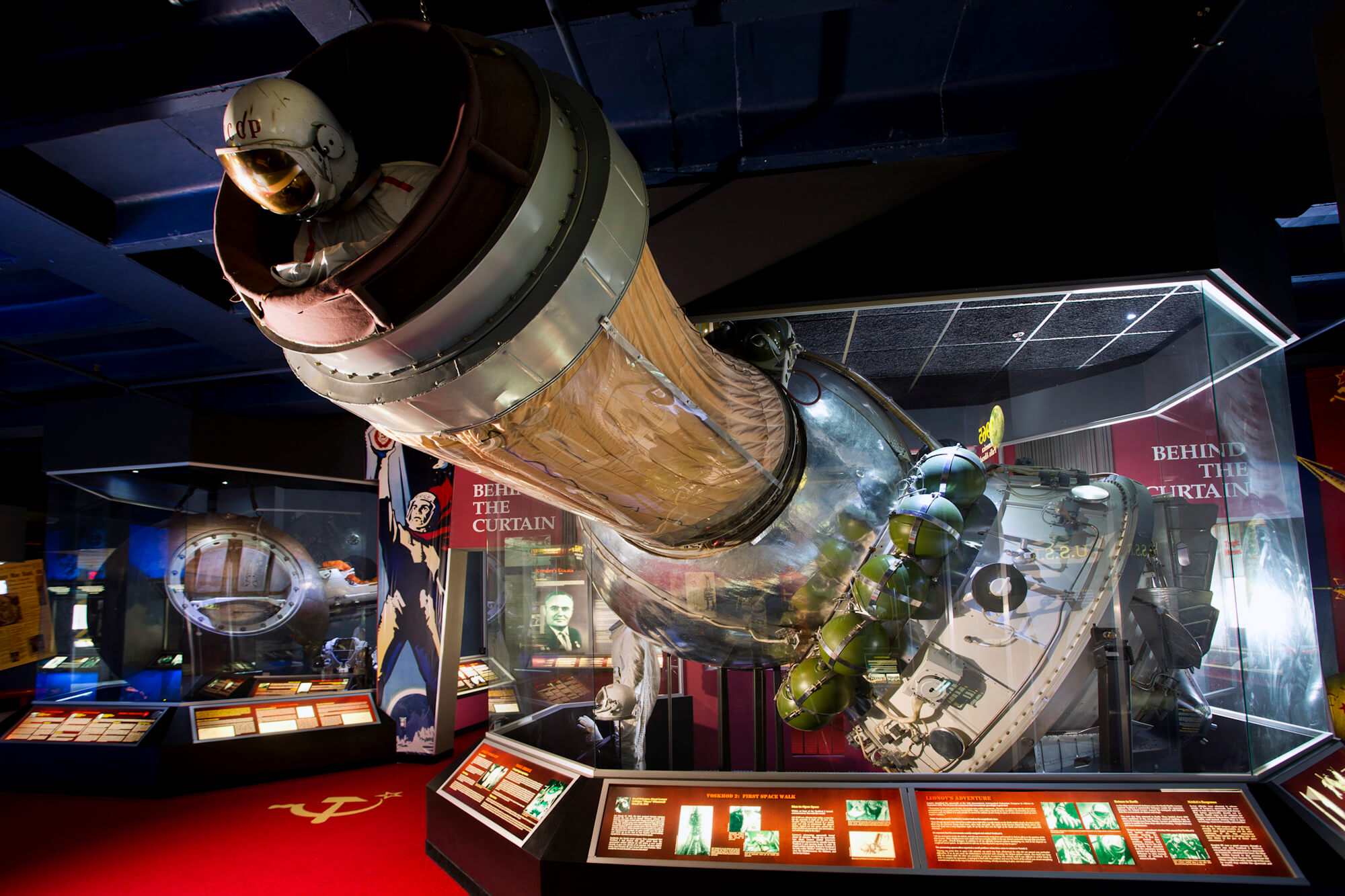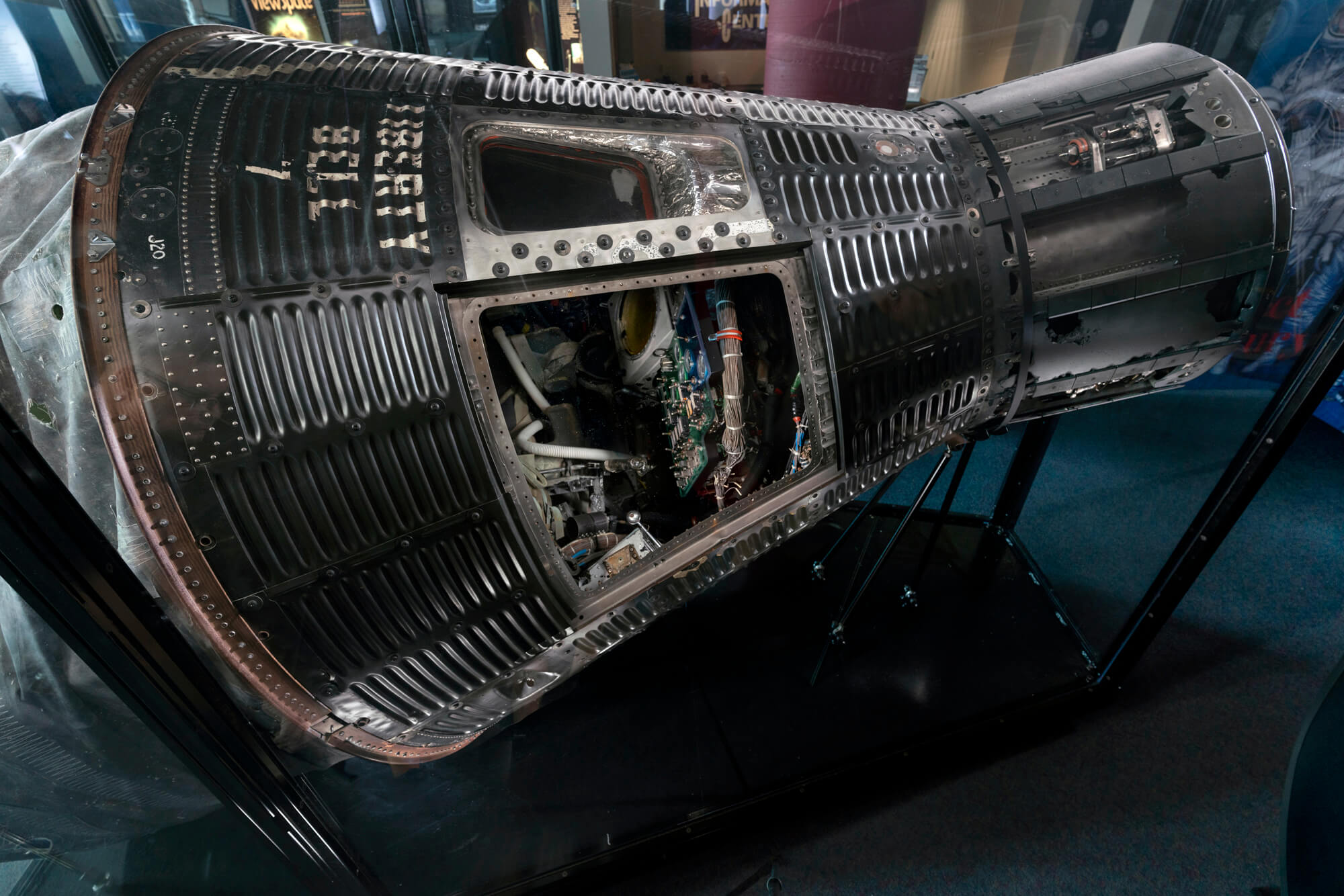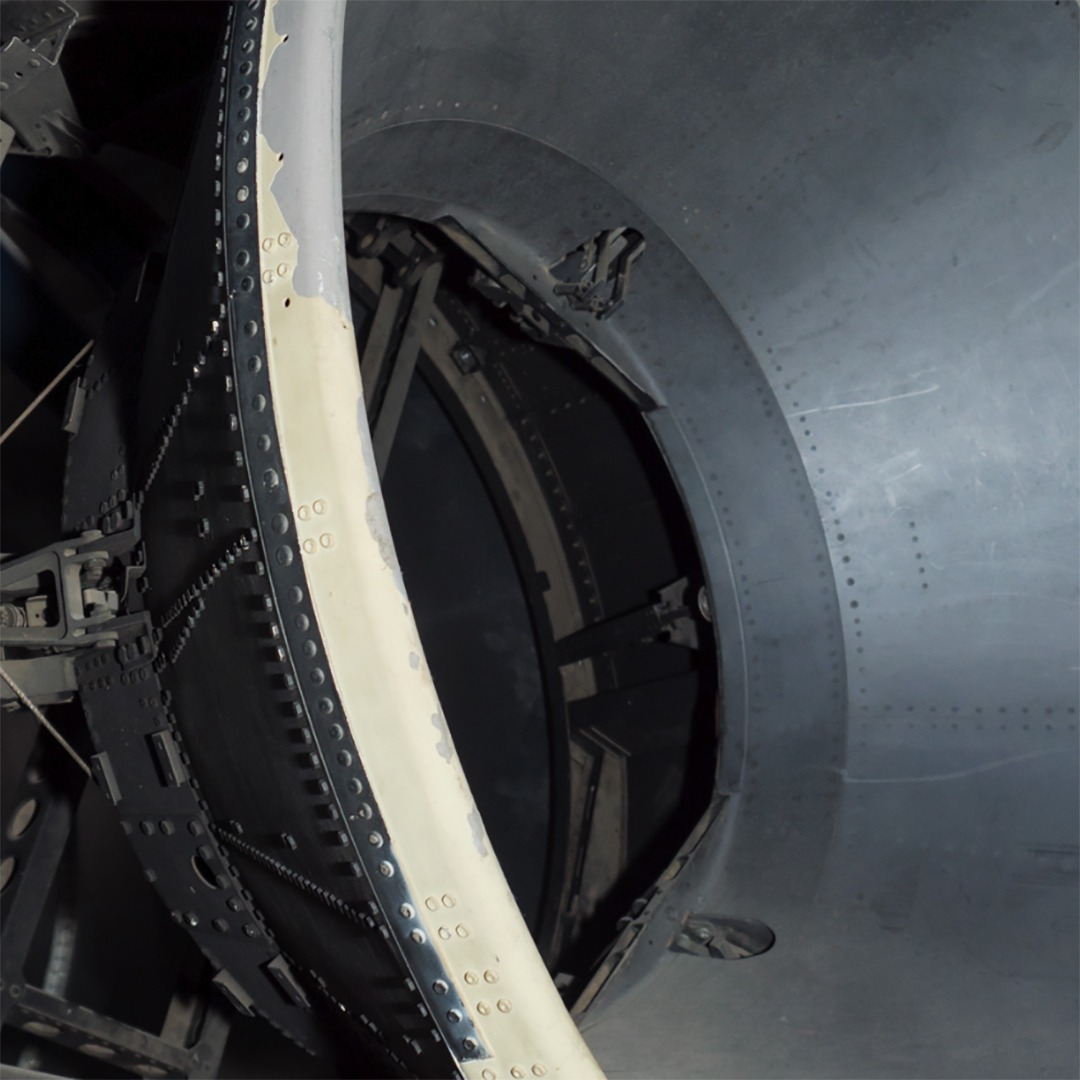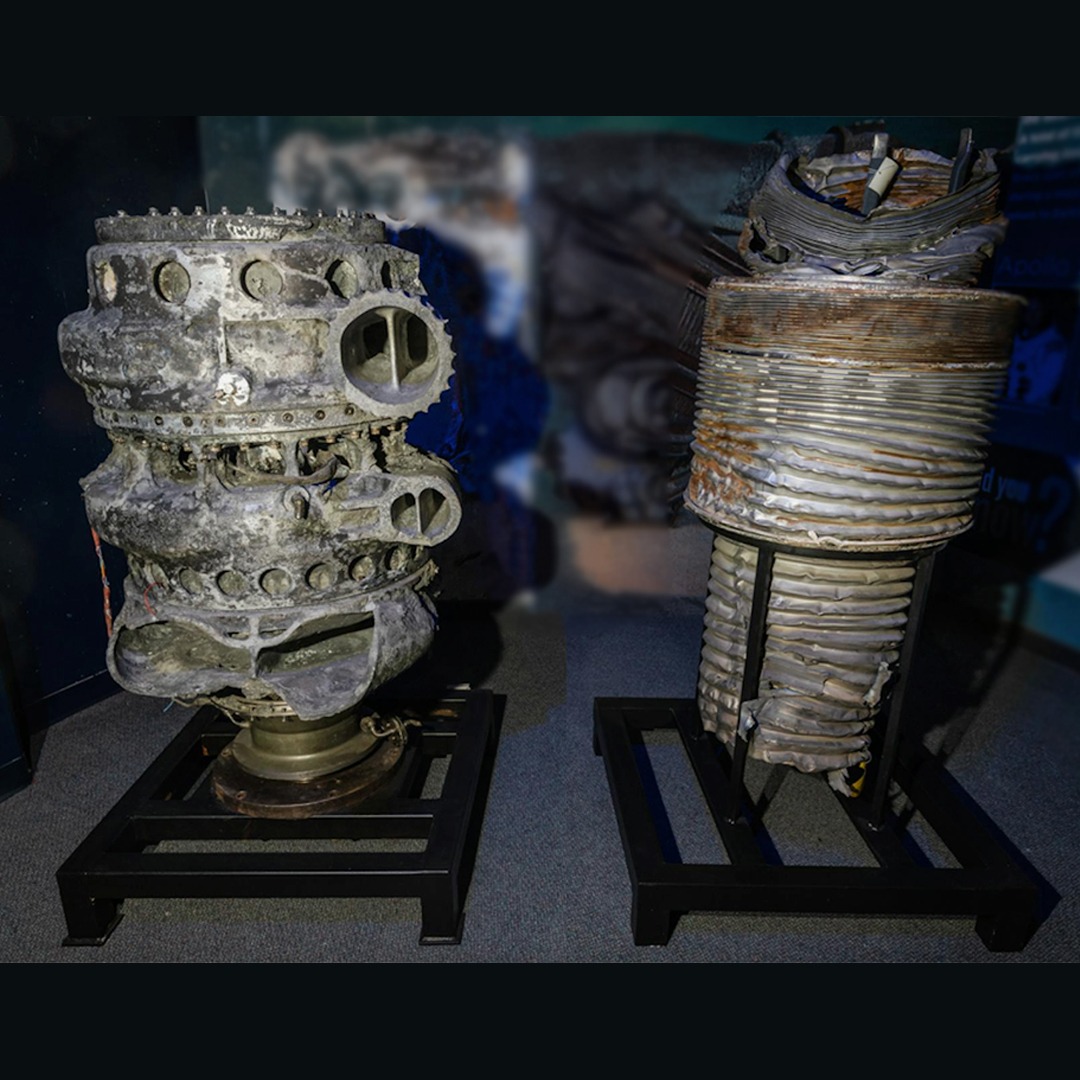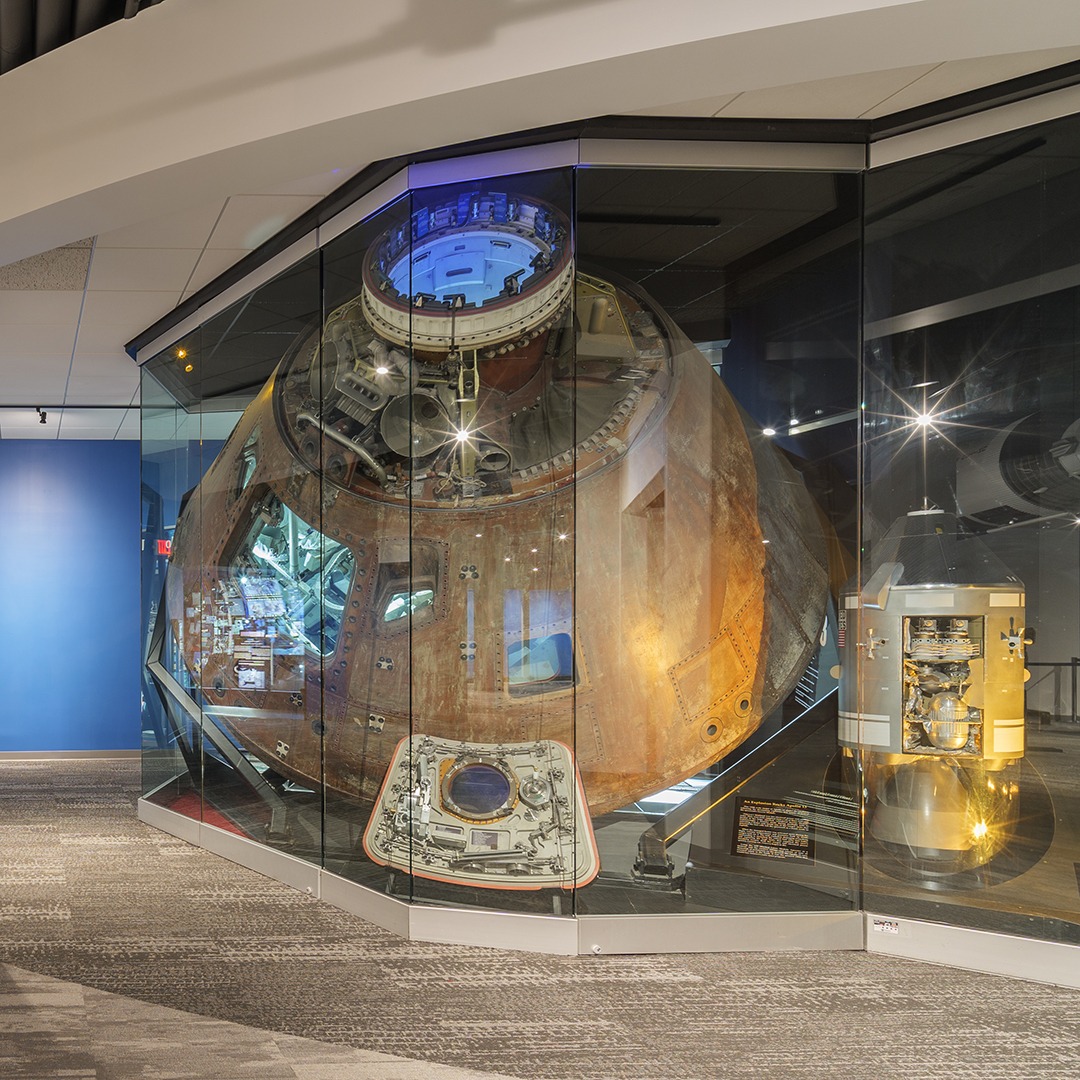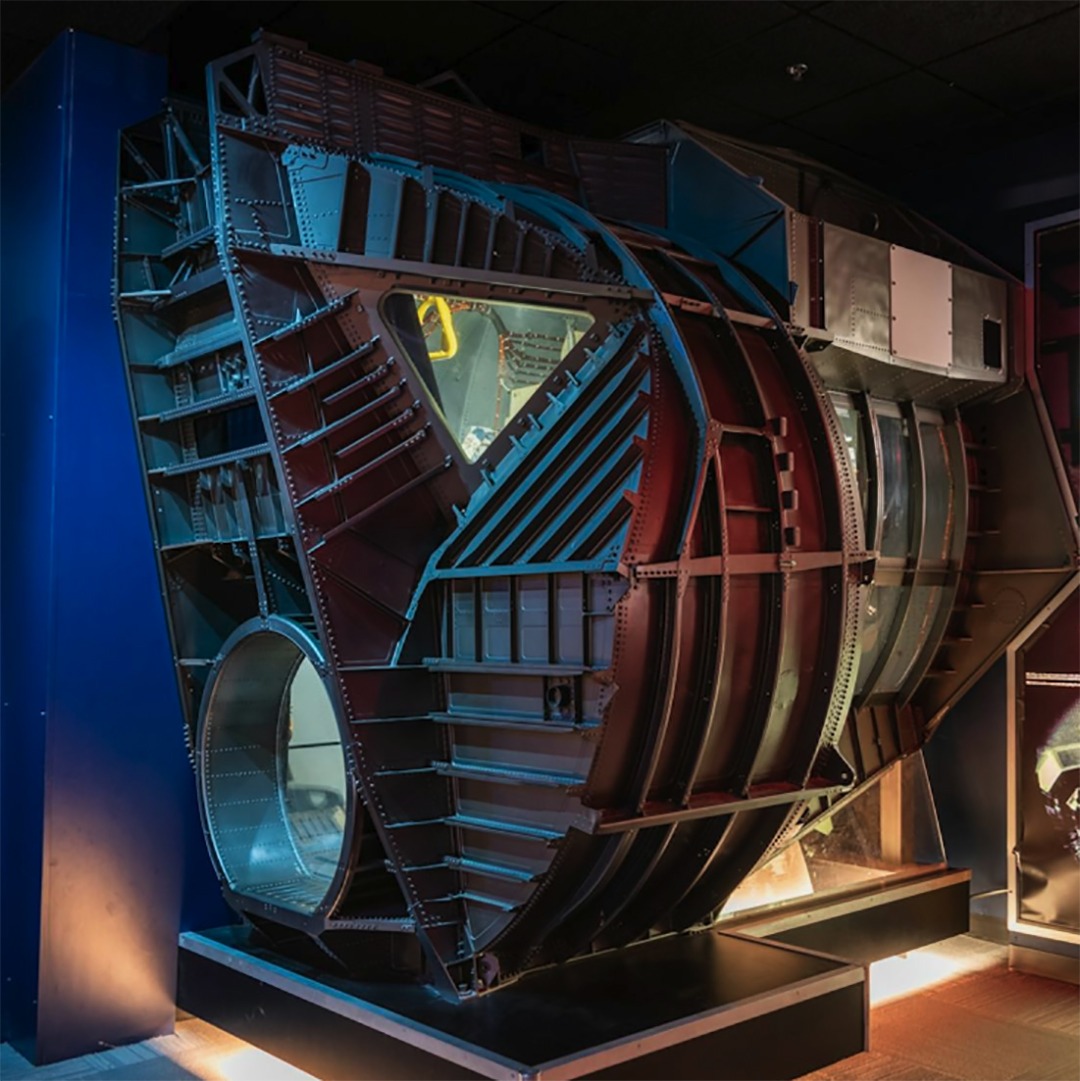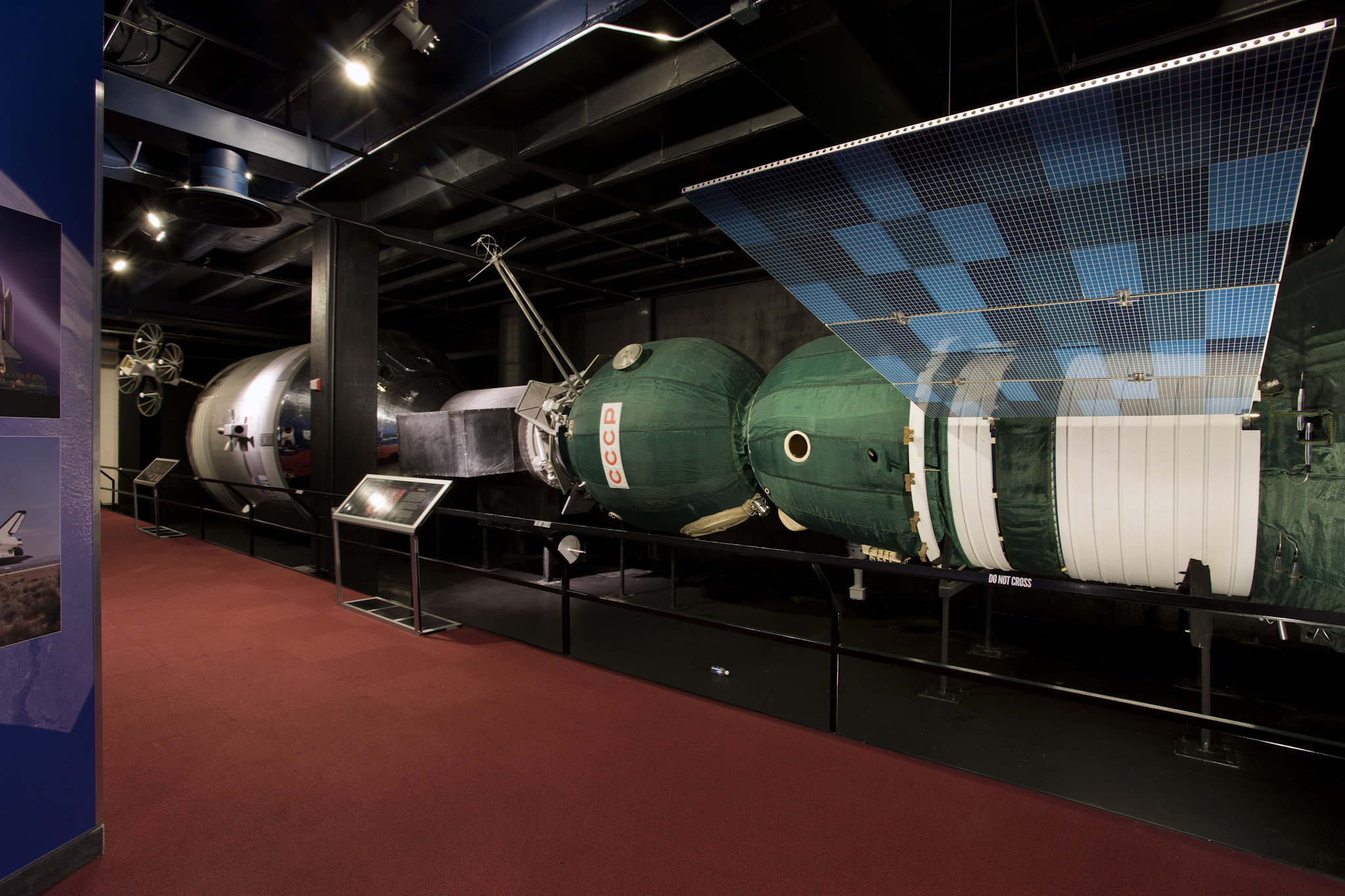Please excuse our Moon dust.
We’re busy creating a new museum experience for you!
The Hall of Space Museum’s renovated galleries are now open for visitors to explore. Many artifacts are on display, but the exhibits and graphics won’t be fully completed until Spring 2025.
Please use this renovated gallery guide to help identify significant artifacts on display in the newly renovated galleries until they are complete.
Click the button below to see a map of the museum.
Kennedy & Khrushchev Gallery
German Wall
GENUINE: Segments of the border wall, or “security construction,” dividing East and West Germany before reunification. These segments came from the northern part of Germany near the cities of Zicherie (West Germany) and Boeckwitz (East Germany). It was erected by troops of the German Democratic Republic (GDR) in 1976.
Missile Row
RD-107 Engine
GENUINE: The RD-107 engine has been a staple of the Russian (and previously Soviet) space program since 1957. It is one of two types of engines used on every R-7 booster which still launches Russia’s Soyuz capsules today. The RD-107 has contributed greatly to the R-7’s power and reliability as a crew-rated rocket.
Rocket Gallery
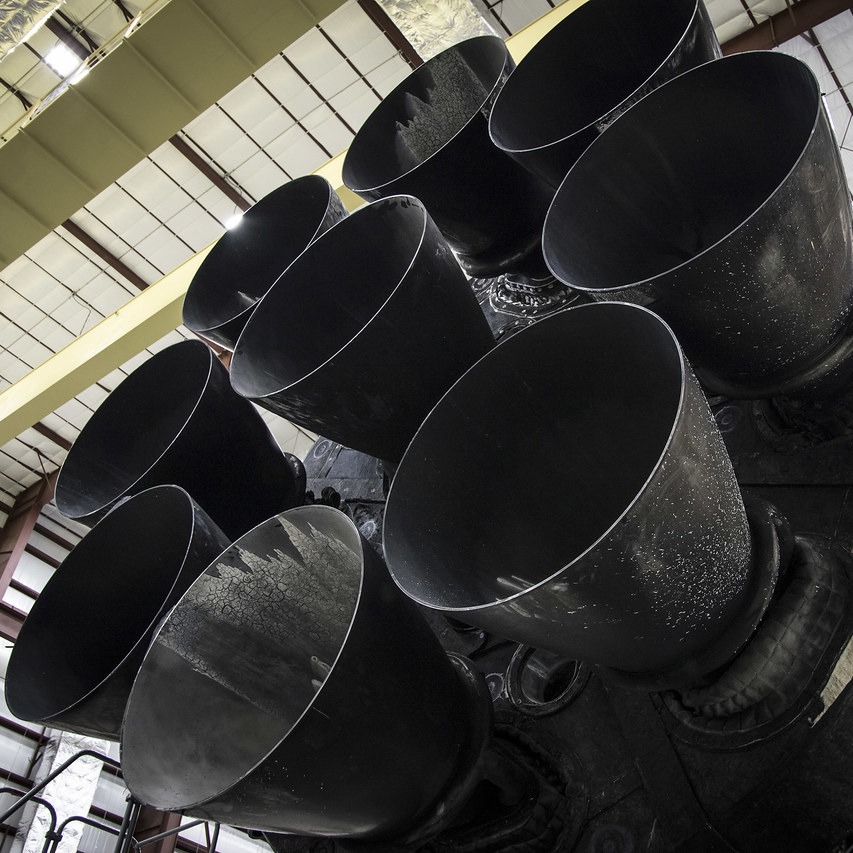
SpaceX Falcon 9 Merlin Engine
FLOWN: Nine Merlin engines power SpaceX’s Falcon 9 rocket. Falcon 9 is the world’s first orbital class, reusable rocket designed for the safe and reliable transport of people and payloads into Earth orbit and beyond.
This Merlin engine received by the Cosmosphere helped power the launch of the Koreasat-5A mission on October 30, 2017, which lifted off from the historic Launch Complex 39A at Kennedy Space Center in Florida, the same pad that supported many of the Apollo missions.
Human Spaceflight Gallery
Voskhod with Volga Airlock
ENGINEERING MODEL (Voskhod), GENUINE (Volga Airlock): As part of the Soviet Union’s Voskhod program, the Voskhod spacecraft was involved in many historic firsts. Voskhod 1 was the first mission to have three crew members and the first flight not to use space suits. The first spacewalk was performed on Voskhod 2. The Cosmosphere’s Voskhod spacecraft is configured to interpret the Voskhod 2 mission.
Liberty Bell 7
FLOWN: Liberty Bell 7 was the second manned spacecraft to fly as part of Project Mercury. Piloted by Gus Grissom, Liberty Bell 7 was a suborbital flight that took place on July 21, 1961. After a routine flight, the spacecraft sank to the bottom of the ocean. It was recovered from the ocean floor in July 1999 and restored by the Cosmosphere’s Spaceworks division. It is privately owned by the Cosmosphere.
Agena Target Adapter
GENUINE: During the Gemini program, astronauts practiced several different maneuvers necessary to land humans on the Moon. One such maneuver was rendezvous and docking. The Gemini spacecraft would meet up with the Agena upper stage in low earth orbit and slip its nose into the docking collar, demonstrating that it was possible for two spacecraft to meet up in space and dock together. This particular artifact was a training aid used to practice docking on the ground.
Moonshot Gallery
Apollo 13 Command Module, Odyssey
FLOWN: Launched on April 11, 1970, the Apollo 13 mission was supposed to be the third lunar landing. On the way to the Moon, there was an explosion in the service module, and the astronauts, Jim Lovell, Fred Haise, and Jack Swigert, were forced to take refuge in the Lunar Module, Aquarius, as they tried to make it back to Earth. They survived the mission home and splashed down on April 17, 1970. This is the flown Apollo 13 Command Module, Odyssey.
Lunar Module Ascent Stage
ENGINEERING MODEL: The ascent stage of the lunar module was the crew compartment, where the crew lived while on the Moon. This particular ascent stage was a test unit. Note the round hatch front entry. This would be changed to a square hatch to accommodate an astronaut with the PLSS backpack better.
Lunar Module
REPLICA: During the Apollo program, NASA sent astronauts to the Moon with two spacecraft: one designed to land on Earth and one designed to land on the Moon. The lunar lander, also called the Lunar Module, was designed to safely land astronauts on the Moon and house them for the duration of their stay on the surface.

Lunar Rover
REPLICA: At over $6,000,000 per unit, the Lunar Roving Vehicle was undoubtedly the most expensive car ever built. Three Rovers were successfully used on the lunar surface by the crews of Apollo 15, 16, and 17-the final three missions to the Moon. After each mission, the Rovers were abandoned on the Moon, each with less than 25 miles on their odometer.
Legacy Gallery
Apollo-Soyuz Test Project
ENGINEERING MODEL AND REPLICA: The Apollo-Soyuz Test Project represents a major milestone in space exploration. The collaboration between the U.S. and the U.S.S.R. that made the ASTP a success not only lightened some of the tension between the two nations but also laid the foundation for developing the International Space Station.
GENUINE: The Apollo 1-G Trainer was used at the Apollo-Soyuz Test Project (ASTP) Trainer complex in 1973 at Johnson Space Center.

H-1 Engine
GENUINE: The Rocketdyne H-1 engine was a liquid-fuel rocket engine used primarily in the first stage of the Saturn I and Saturn IB rockets during the 1960s.
Planetarium & Dr. Goddard's Lab Experience (on main level)
Patty Carey Starball
GENUINE: Patty Carey, Cosmosphere founder, loved astronomy. She felt everyone should have a chance to better understand the sky above them and the Earth on which they lived.
With that motivation, she launched her dream of opening a planetarium in Hutchinson, KS. She raised funds to purchase a used planetarium projector and dome erected in the vacant poultry exhibit building on the Kansas State Fairgrounds in Hutchinson. She rented folding chairs, recruited volunteer help, and opened the door of “Hutchinson’s Theatre of the Skies” on December 2, 1962. It was the first planetarium in the state.
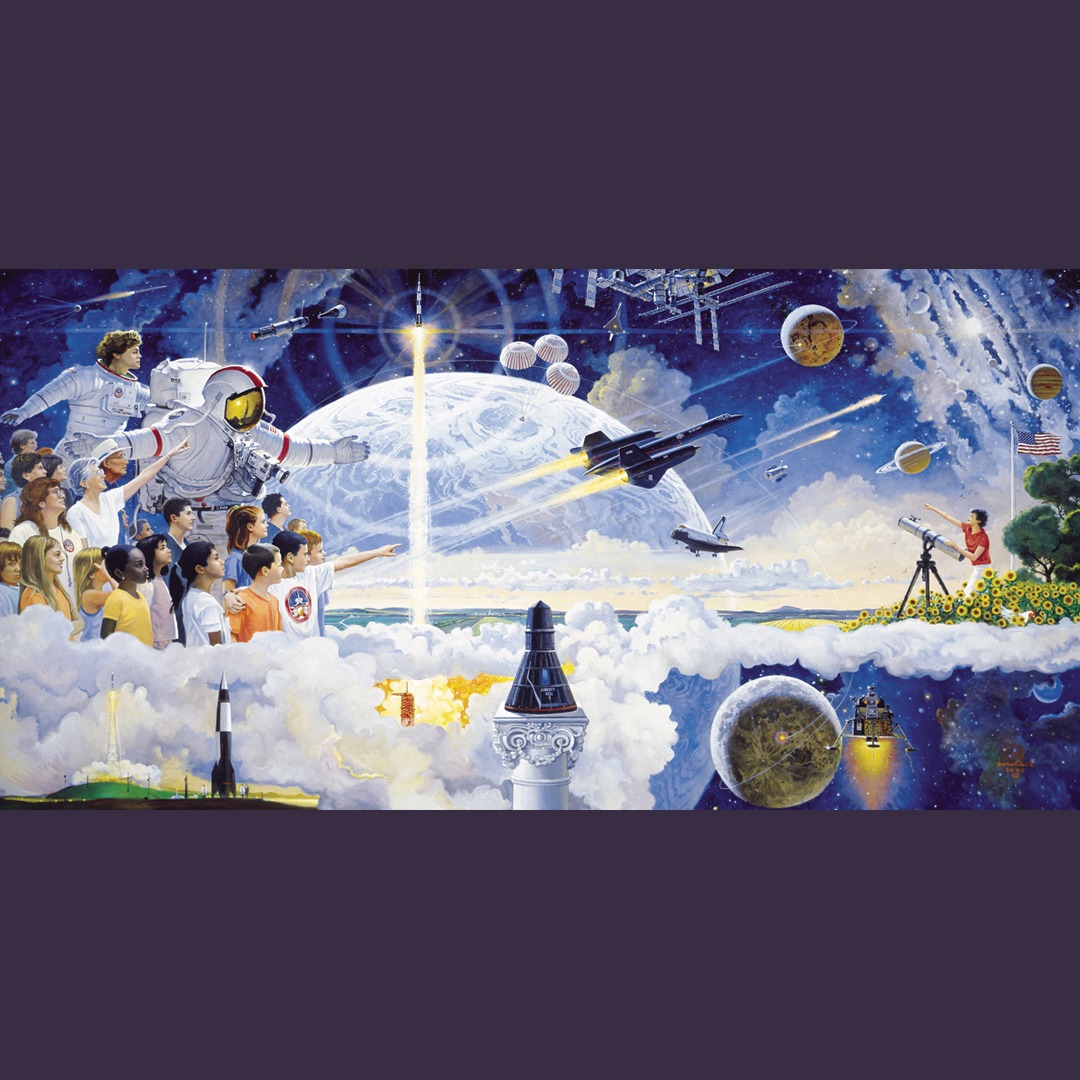
Robert McCall Painting
GENUINE: This mural by world-renowned space artist Robert McCall honors the dream and vision of Cosmosphere founder Patty Carey. The mural is a collage of images of Carey and the development of the Cosmosphere, as well as significant artifacts in the Cosmosphere collection, such as Apollo 13 and Liberty Bell 7.
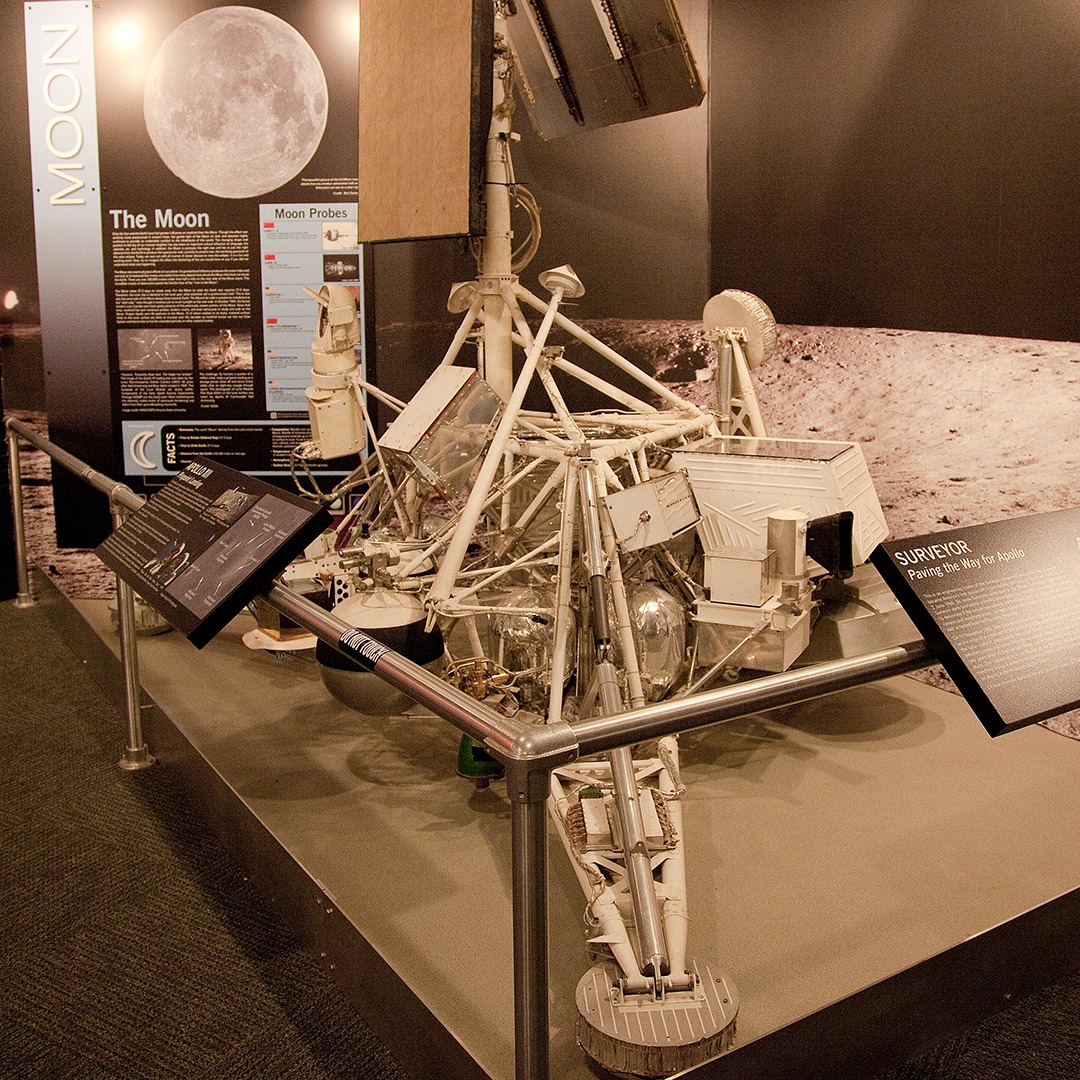
Surveyor Spacecraft
ENGINEERING MODEL: Surveyor 1 became America’s first spacecraft to successfully soft land on the Moon on June 2, 1966. The primary objective of the Surveyor program was to transmit scientific and engineering information from the lunar surface to determine if the surface was safe for crewed landings.

Mars Rover
REPLICA: The Mars twin rovers Spirit and Opportunity, launched by NASA in 2003, were tasked with exploring the Martian surface to search for signs of past water activity. Despite being designed for a 90-day mission, both rovers exceeded expectations, with Opportunity operating for nearly 15 years and making significant geological discoveries. This is a full-scale model of the Mars rovers Spirit and Opportunity.
Artifact Index
FLOWN: The artifact was flown.
GENUINE: The artifact is real but not necessarily flown.
FLIGHT-READY BACKUP: The artifact was prepared and capable for use but never used.
ENGINEERING MODEL: The artifact was built to specification but used for testing or display.
REPLICA: A copy or model.



